In the EFL Championship evening kick-off, Swansea City saw off an in-form and promotion-chasing Sheffield United side by the smallest of margins at the Liberty Stadium. In this tactical analysis, we’ll look in depth at how Swansea City were able to recover from a poor first-half to take all three points.
It was a game of two halves. The first belonged to the Blades, who wasted two big chances, before Swansea took theirs. It was an interesting tactical battle even if it did lack clear-cut chances in the first half.
The form books were slightly in favour of the visiting side. Chris Wilder’s side had won four Championship games in a row which saw them leapfrog Norwich City into the automatic promotion places before the 3pm kick-offs. During that four-match winning streak, the Blades had scored 10 goals, conceding just once. Ending such a run didn’t look highly likely for a Swansea City outfit who have struggled at home this season.
Incidentally, this was their first win on home soil against any side currently above them in the table. Their only away win against a side currently above them in the table also happened to come against Sheffield United, on the opening day of the season.
The line-ups
Both sides lined up as expected with only one team change between them as Oli McBurnie returned from illness to replace Courtney Baker-Richardson up front for the Swans.
Sheffield United lined up in their recognised 3-4-1-2 shape. Iit was going to be interesting to see how Swansea City would cope with their opponent’s desire to push their wide centre-backs forward in attacking support.
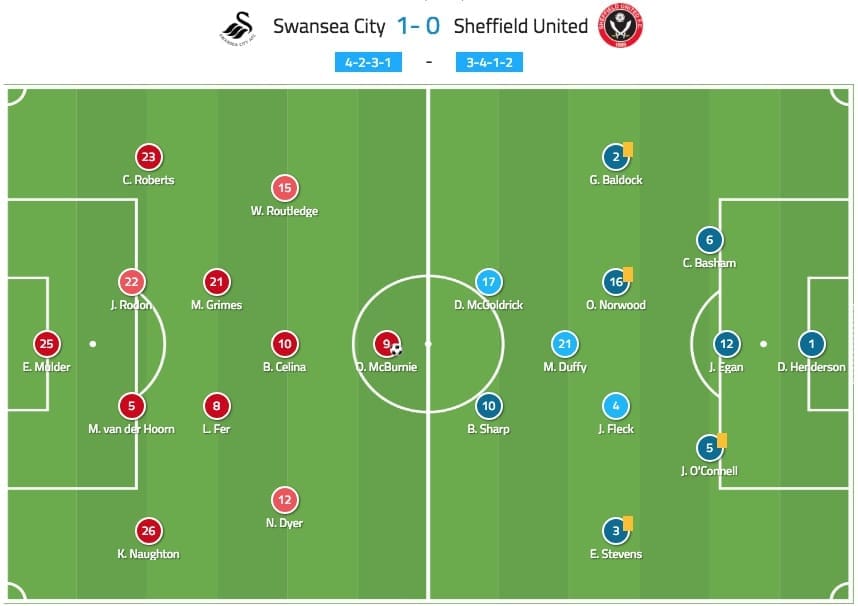
Sheffield United dominate from the start
Sheffield United like to get the ball into wide areas where their overlapping centre-backs provide added support. Swansea City quickly recognised this, and were keen to get numbers across and limit their space and availability to send crosses into the box.

The visitors also committed players forward in attack. For the first 15 or 20 minutes, they pinned Swansea City back in their own half, while their hosts lacked an outball from deep.
The screenshot below shows nine of Sheffield United’s outfield players either in or approaching the final third. Their right-sided centre-back, Chris Basham (circled), has to quickly get back into a defensive position as soon as his side
losepossession.
With so many players forward for United, Swansea City needed to find a way to make quick transitions from deep positions, but they looked disjointed early on and struggled with their shape.

Swansea City’s problems in the channels
One of Swansea City’s main problems early on was that they couldn’t make the ball stick when aiming long vertical passes to their two inverted wingers, Wayne Routledge and Nathan Dyer. Sheffield United always closed the two of them down in the first half, as well as number ten Bersant Celina. This allowed them plenty of opportunities to regain possession just inside their own half before sending the ball back into danger zones ahead.

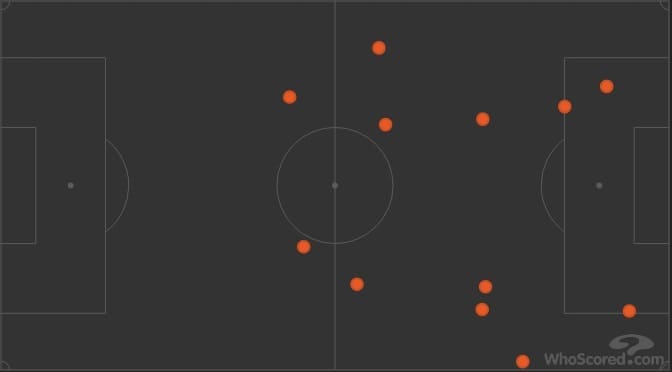
Swansea lost possession a number of times in the opening 17 minutes in the channels. The red dots above (with Swansea playing from left to right) show where Celina, Routledge and Dyer lost possession during Sheffield United’s early dominant spell.

Another problem for Swansea City was their slow, almost pedestrian play. Sheffield United were leaving gaps due to committing players forward. The hosts were too slow though on a number of occasions in getting the ball into key areas of space that were left behind.
Below is a good example of this. Space has opened up down the right flank and Leroy Fer is available to receive a pass from Oli McBurnie and release right-back Kyle Naughton down that side. However, the ball is held up on the opposite side of the pitch and Swansea then have to recycle possession, giving the Blades enough time to get back into their defensive shape across the pitch.


Swansea’s only decent attacking opening of the first half came after a good forward pass from Leroy Fer, picking out Bersant Celina ahead of him who occupied space in between the lines. With right-back Kyle Naughton too deep, Nathan Dyer (circled) stays wide this time to ensure width.

As the attack progresses (below), Nathan Dyer comes inside off the touchline, allowing him to get in behind the opposition’s narrow defence.

It’s a promising opening for Swansea following their previous struggles to get forward. As was the story of the first-half for the home side however, their build-up play lacks pace and decisiveness and the move breaks down.
Sheffield United’s overlapping centre-backs
Sheffield United’s overlapping centre-backs is something that’s rather unique and an admirable tactical commitment from their manager Chris Wilder. Like the Sky Sports co-commentator said during the game, “it’s organised chaos – it shouldn’t work but it does.”

It’s effective because it provides attacking overloads. These helped provide the Blades with one of their two big chances in the first half. It also helps when you have two very versatile centre-backs in Basham and O’Connell. Both are very confident on the ball and can bring the ball out from the back. Basham later moved into a midfield three as Wilder later switched to a 4-3-3 to match Swansea.
Despite adopting a back-three system, Sheffield United often play out from the back with effectively a back four. Below, the right centre-back Chris Basham (circled) steps out from the defensive line, so much in fact that he’s ahead of the two central midfielders as shown by the dotted line.
This allows the right wing-back George Baldock to get further forward to provide attacking width. As their attacks progress up the pitch, Basham and Baldock are a useful partnership down the right wing.

This contrasts with Swansea, who, despite adopting a back four, build from the back with effectively a back three. Usually, Swansea City split their two centre-backs very wide to provide passing angles with a holding midfielder dropping deep into the middle of them.
Against Sheffield United though this changed slightly, most likely due to United’s early dominance in wide areas. Swansea needed more support in these wide areas and to stop the number of times they were losing possession here. Below shows Matt Grimes (circled) dropping back in line with defenders Mike van der Hoorn and Joe Rodon.
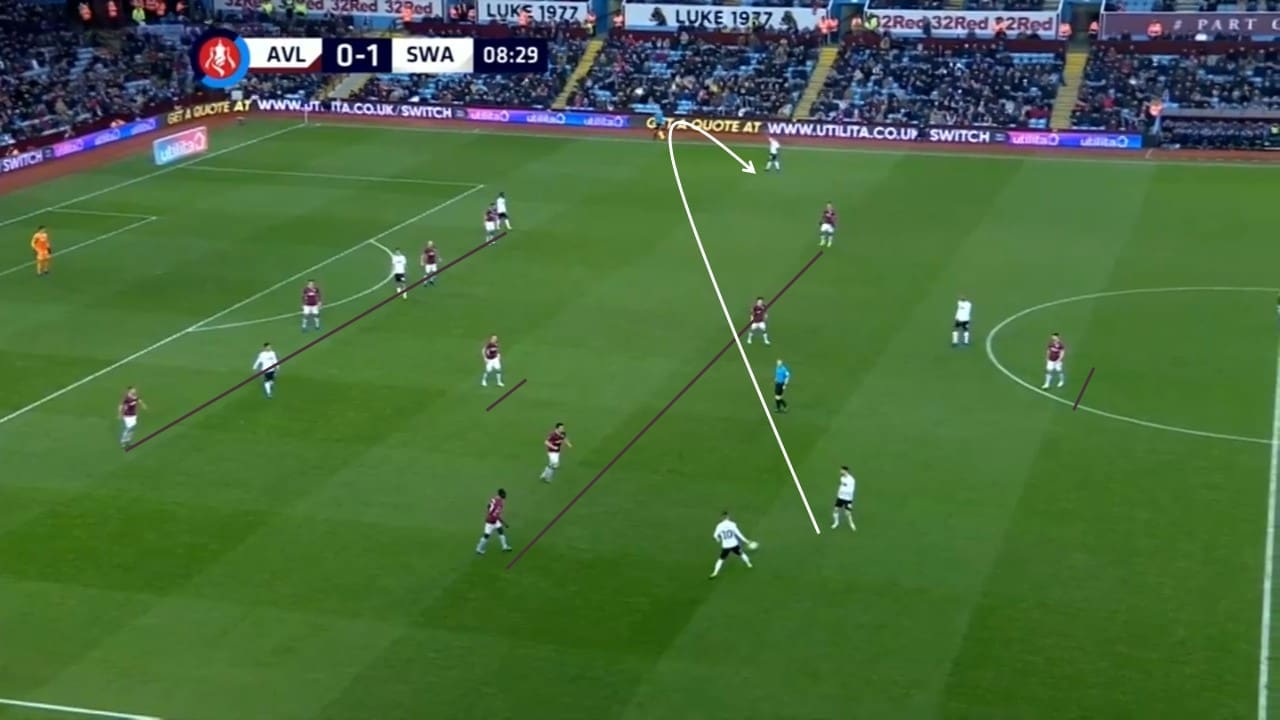
Swansea manager Graham Potter likes his full-backs to provide attacking width so didn’t want either Kyle Naughton or Connor Roberts dropping too deep to receive the ball.
The two touch maps below show a comparison between the touches of Swansea’s two centre-backs, ex-Ajax man Mike van der Hoorn and Cameron Carter-Vickers, and those of Sheffield United’s two wide centre-backs, Chris Basham and Jack O’Connell.
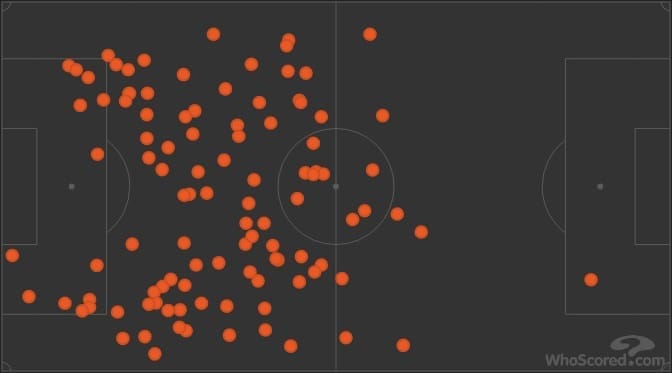
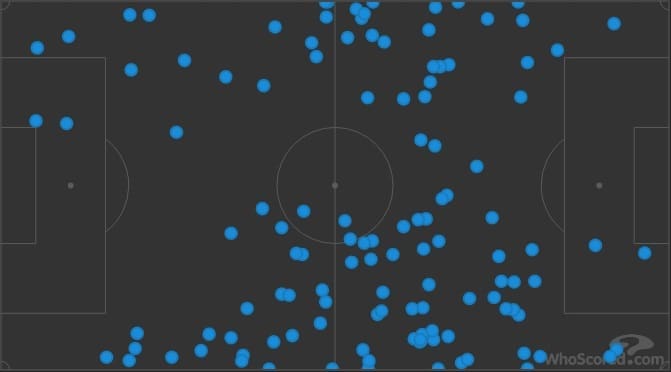
Swansea City build from the back in a back-three shape as Matt Grimes (circled) drops deep into the defensive line
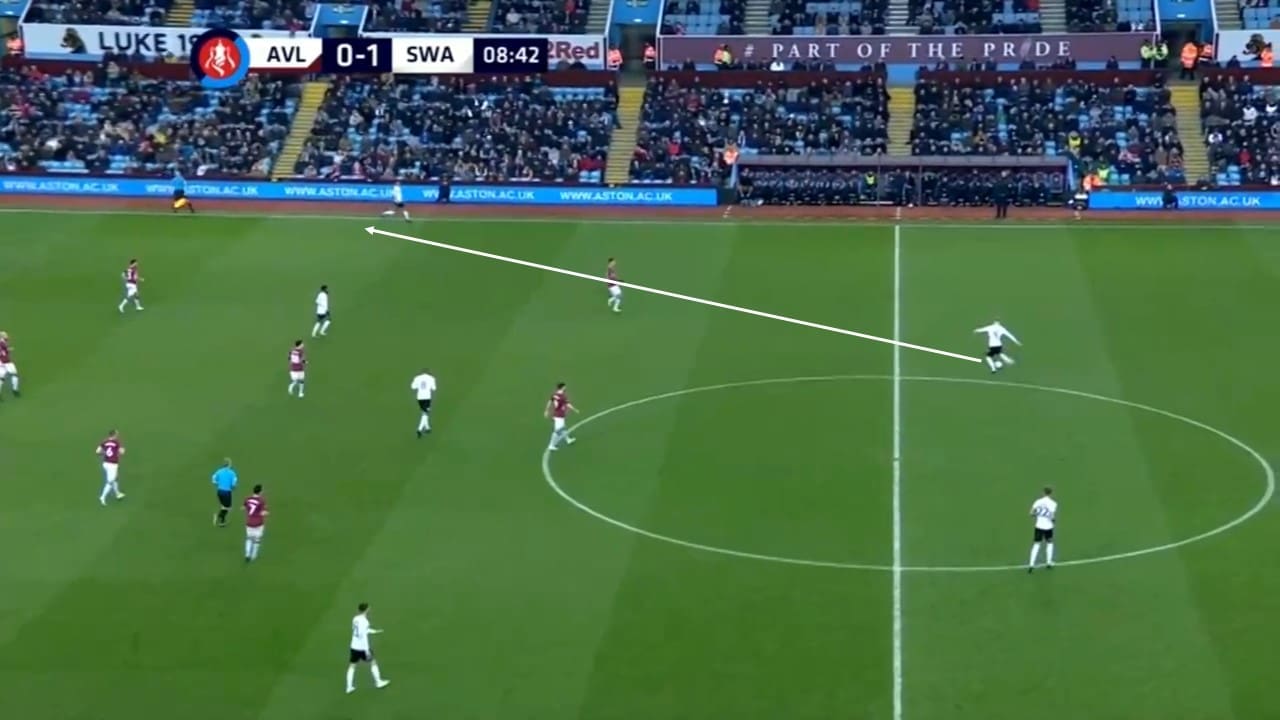
Sheffield United’s missed chances
Sheffield United appeared to suffer from the same deficiencies that Swansea have all too often this season. In other words, dominating early spells but going into the dressing room at half-time with absolutely nothing to show for it on the scoreboard.
The first of two that fell to Billy Sharp was their best one. After a long cross from the right was picked up at the far post, a low cross came back in towards the six-yard area. Billy Sharp dropped back just a yard away from his marker Cameron Carter-Vickers to get a left-footed shot on goal. It was aimed too centrally, though, and goalkeeper Erwin Mulder was able to make an excellent save.
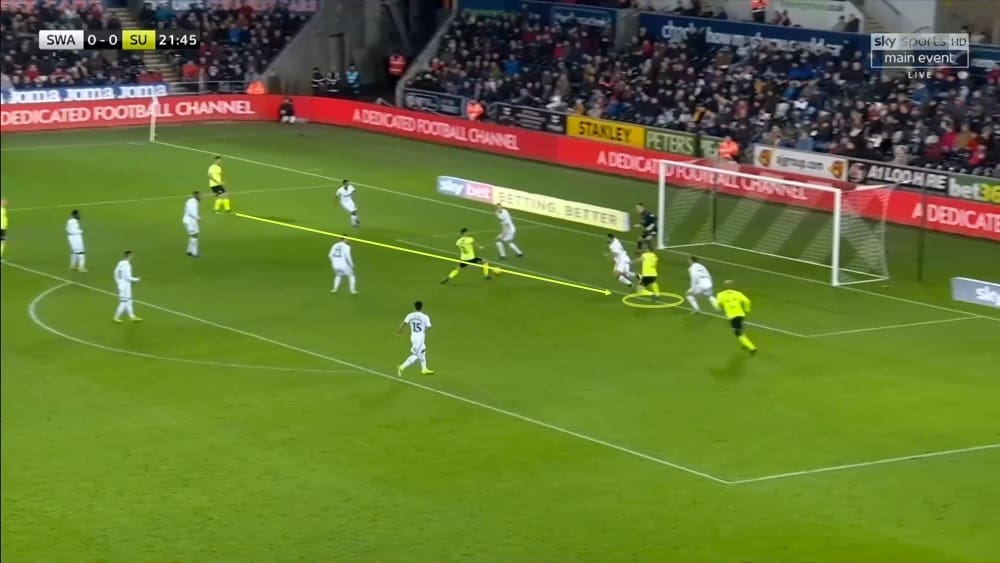
With seven minutes left in the first half, the second came from Sheffield United benefitting from their overlapping centre-backs and the attacking overloads. As we can see below, the Blades are 3v2 down the right as space opens up in the right half-space. There is plenty of time to send in a cross aimed towards the back post for McGoldrick (circled), but he glances his header wide of the target.
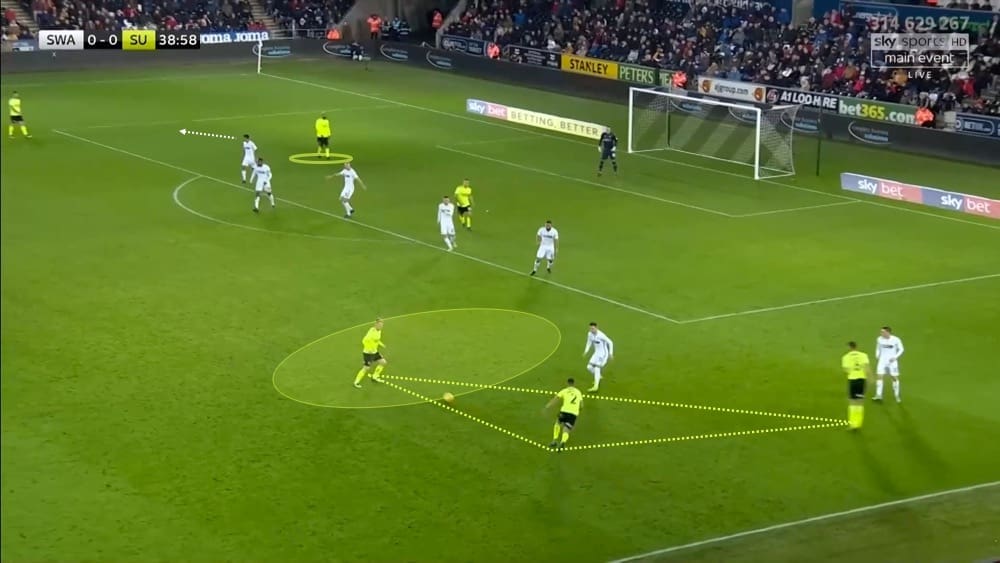
Graham Potter’s tactical fix (Celina deep and a 4-3-3)
Sheffield United were in control in the first 20 minutes or so. Graham Potter needed to change things around, otherwise it was only going to be a matter of time before the visitors opened the scoring.
The 43-year-old Englishman arrived in South Wales last summer from Sweden with a reputation of being tactically flexible, able to seamlessly switch between two or sometimes three formations during a single game. It’s been pretty much a combination of hit and miss so far, but this one will go down as one of his most effective tactical changes of the season to date.
He dropped Bersant Celina – who had been playing as a number 10 up until this point – back to a deeper left-sided midfield role. Routledge and Dyer were pushed up with Oli McBurnie to form a 4-3-3 formation. McBurnie moved to a wide-left position, forming a useful left-sided trio with Celina and full-back Roberts.
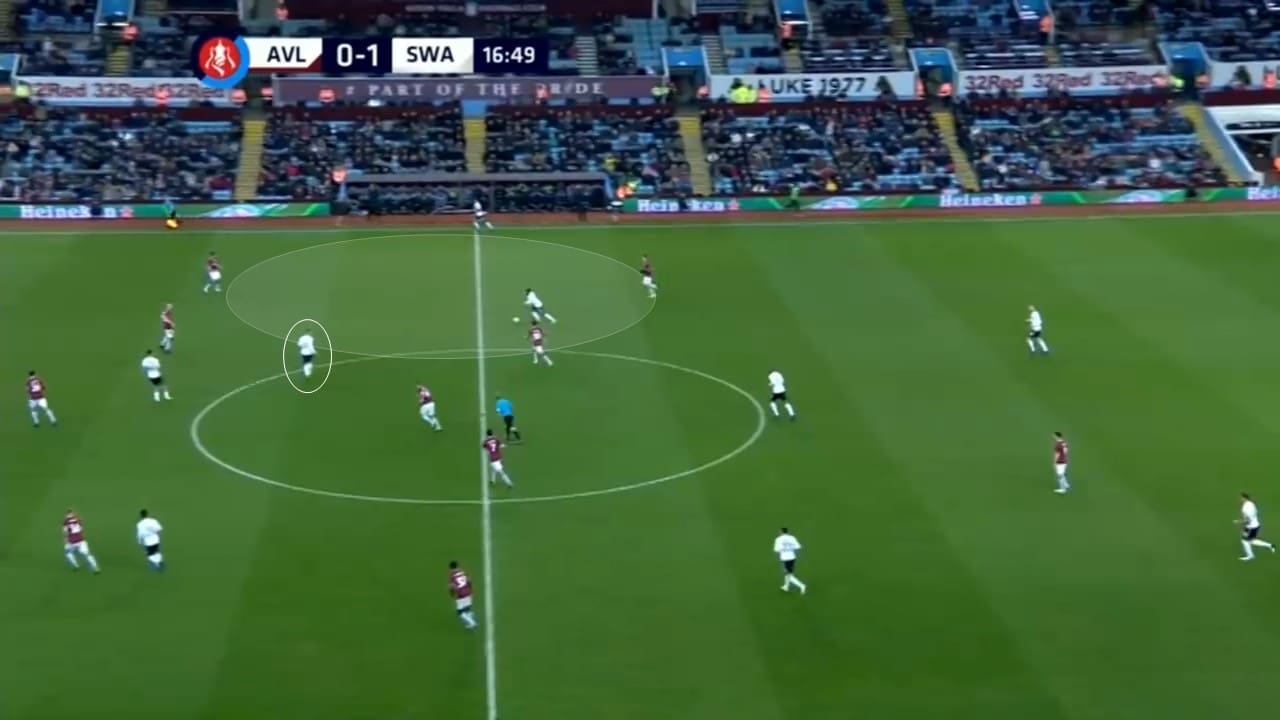
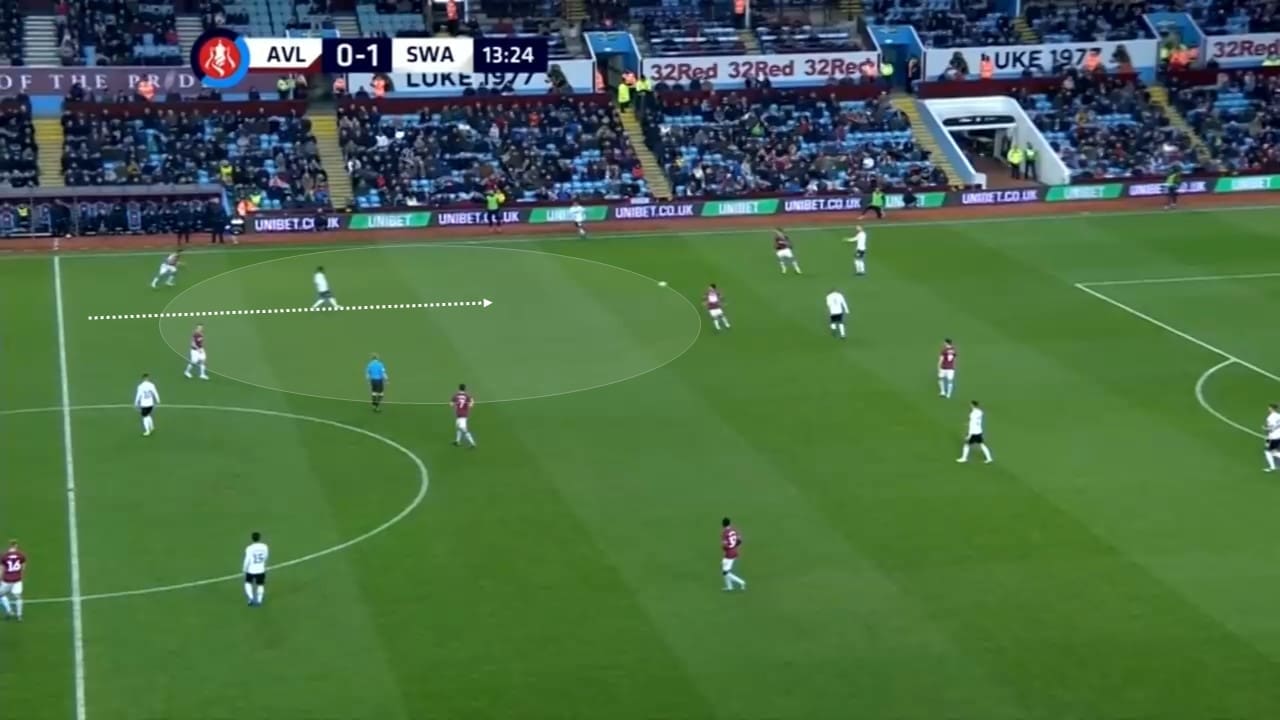
Moving Celina to a deeper left-sided role was a key switch from Graham Potter. Dropping back into the left-back position whenever possible, his eye for a pass was useful to thread balls through United’s lines and into space.
Matt Grimes (circled) points towards Mike van der Hoorn, recommending a pass across to the defender. However, Celina picks out Leroy Fer, allowing him to turn into space and drive forward. Leroy Fer won’t feature heavily in this analysis but he was rightly chosen as the man of the match.
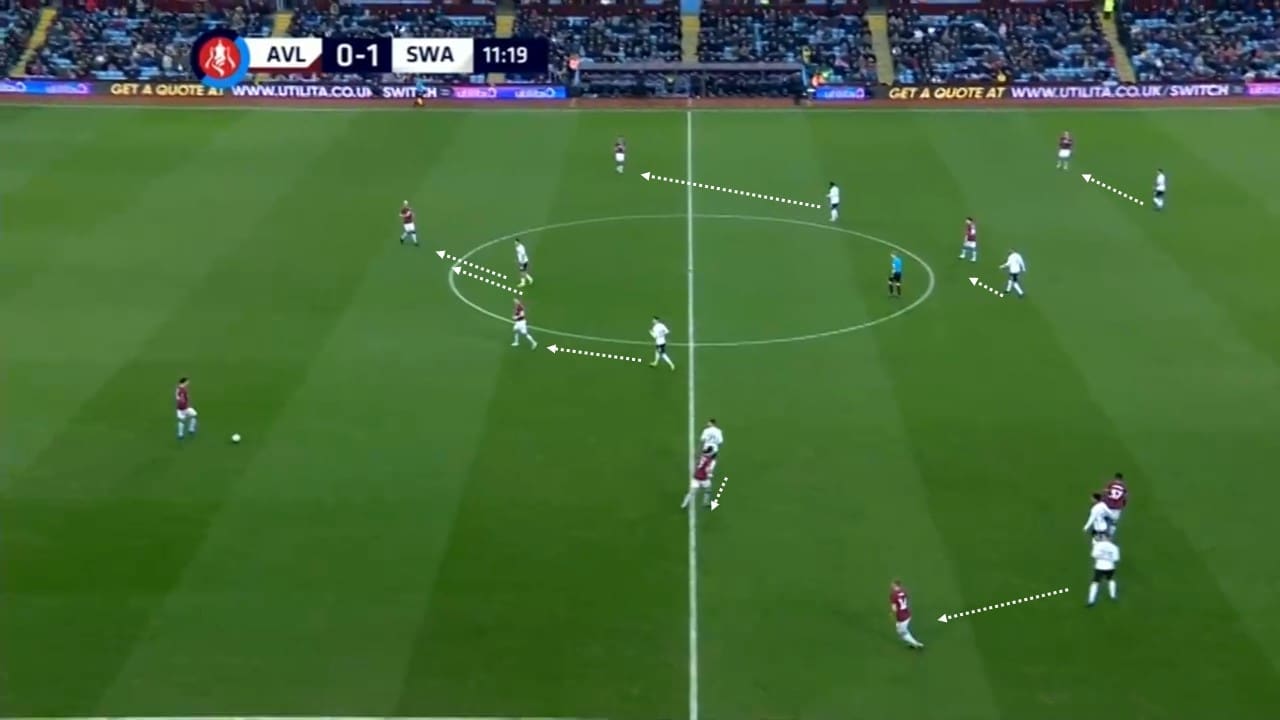
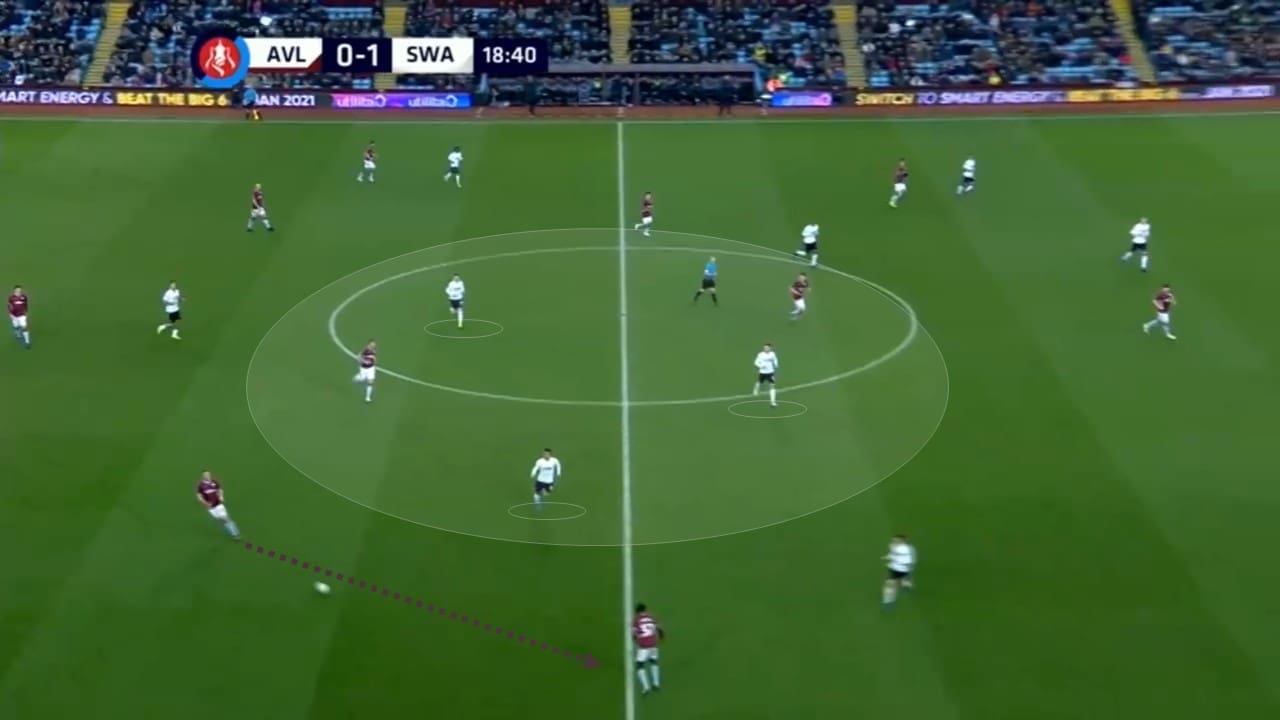
He has struggled this season to perform consistently following an Achilles injury. Nevertheless, he’s getting back to his best, and this was one of his best performances of the season. Showing his physical strength on the ball, Fer has been known to lose possession too often in dangerous, deep areas but he fared brilliantly against a physically strong Blades side.
Swansea’s tactical change helped them get forward down the left. Connor Roberts had been pinned back to manage Sheffield United’s overlapping centre-backs, but Celina and McBurnie provided a better dynamic to work the ball in behind.
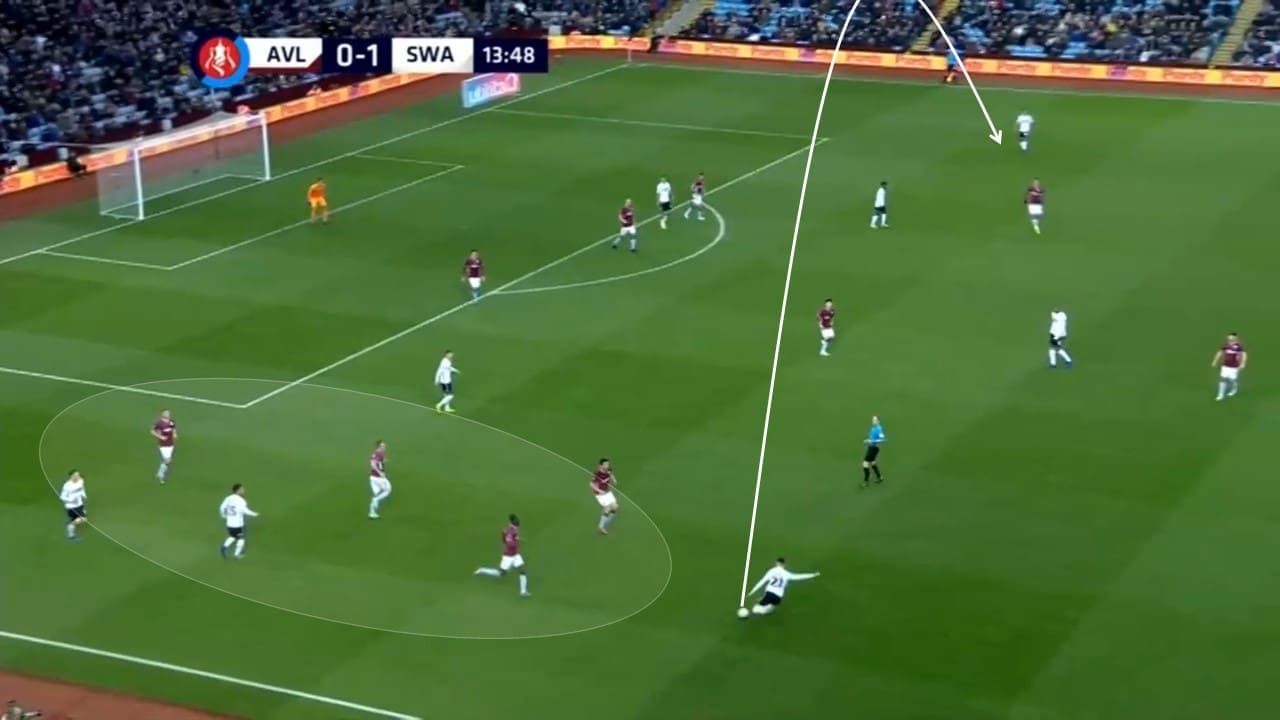
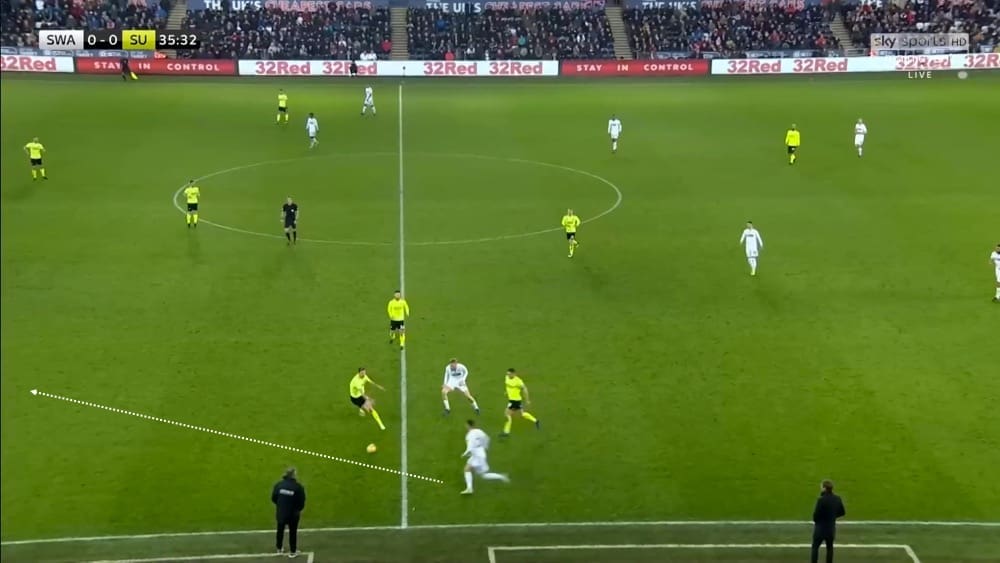
As the half went on following Potter’s changes, which seemed to take effect at around the 25th-minute mark, more space began to open up through the middle as Swansea were able to finally stretch the opposition across the pitch. Like they have in recent matches, the full-backs provide the attacking width.
This allowed the two inverted wingers, Wayne Routledge and Nathan Dyer, to move inside to link up the play with striker Oli McBurnie. McBurnie has often dropped deep this season to get involved in the build-up play. However, Potter has looked to play his strikers further forward when possible, looking to make runs in behind the last man.
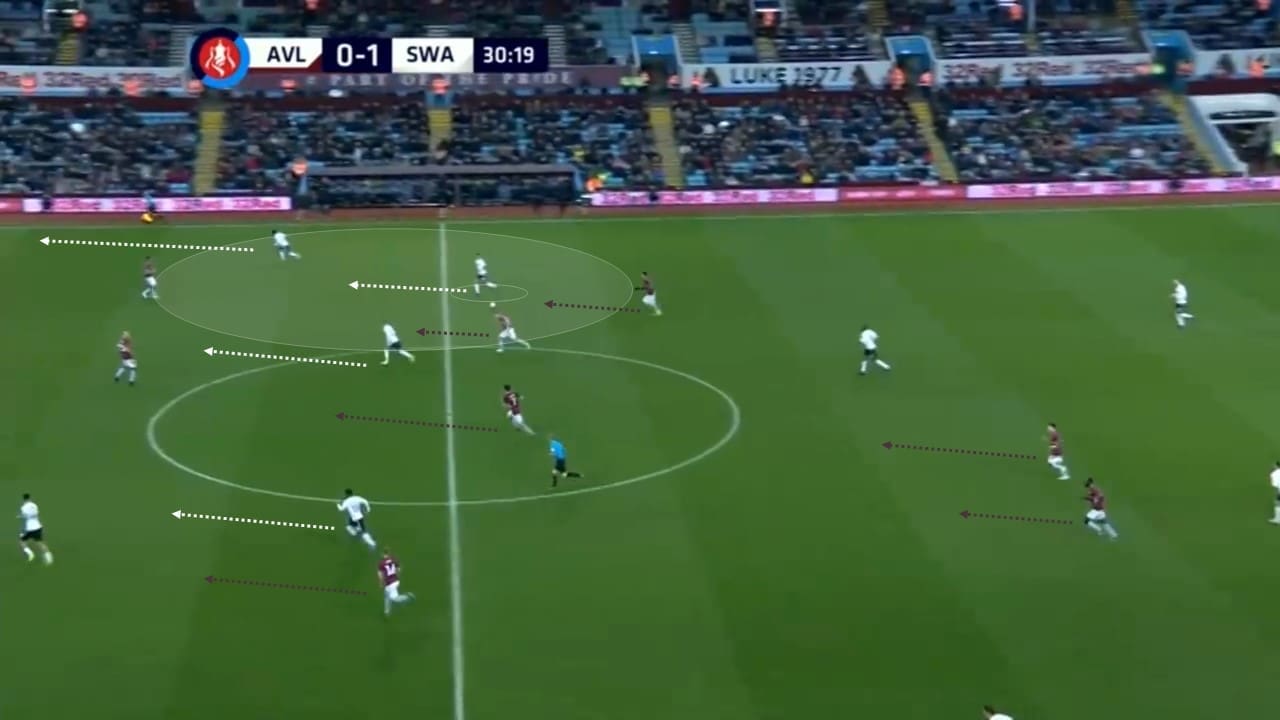
Rotations help to ensure that Swansea keep their shape
There were moments when Swansea’s players would rotate and switch roles momentarily. This was usually when players had moved out of position or had pressed out of possession. For example, we saw earlier how Nathan Dyer offered width on the right flank when Naughton was too deep.
The other main rotation was between Nathan Dyer and Bersant Celina. These movements caused problems for the opposition. In the screenshot below, Nathan Dyer (circled) has dropped deeper into the space available to form a three-man midfield.
Bersant Celina is in a more advanced left-sided role in this example. Celina initially drops very deep in the early phase of an attack but he soon pushes forward as the attacking move progresses.
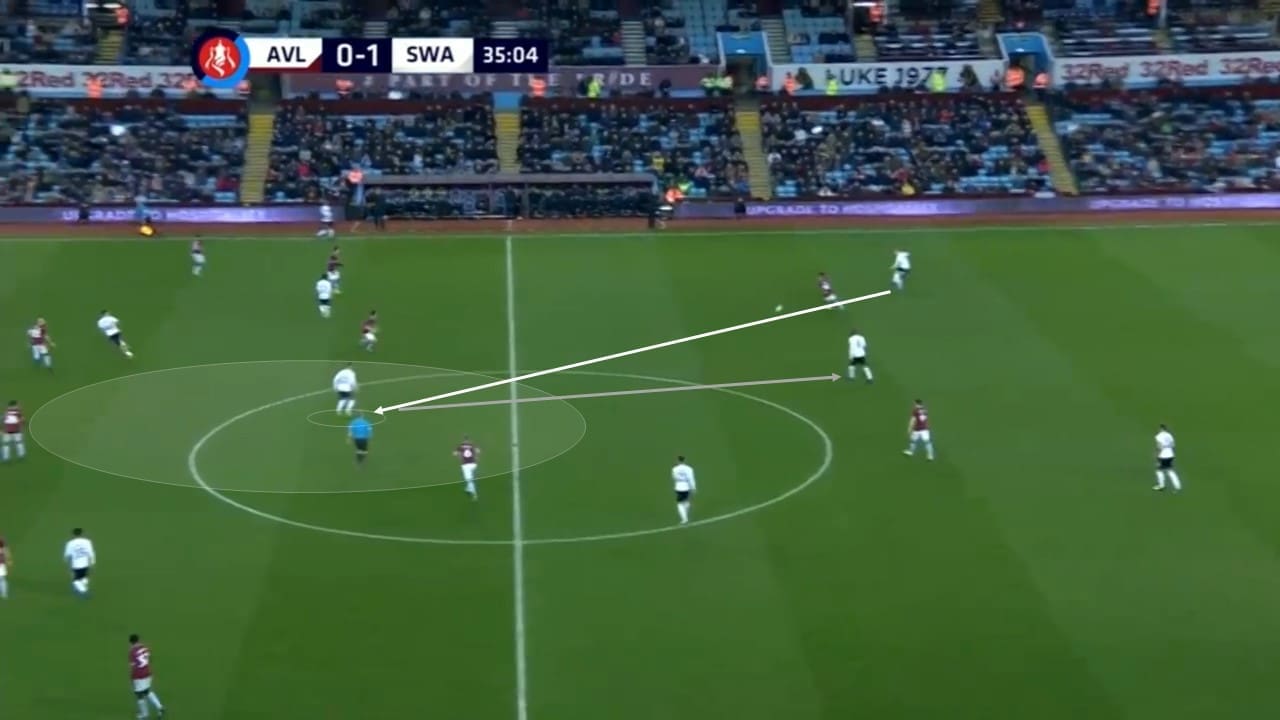
Second half momentum switch: Dan James’ big influence
Swansea’s need for pace in their play and an outlet to expose Sheffield United’s forward commitment of players was pretty much as clear as day come half-time. The visitors had sent two warning signs during the opening 45 minutes when their two in-form strikers had rare off-days in front of goal.
They were left to rue those chances as Swansea City recovered and were now the side in the ascendancy thanks to the arrival of flying winger Dan James. The average touch-map below shows the average touches for both sides in the second-half. The dotted line shows each player’s comparison from their first-half average position.
As you can see, a number of Swansea players averaged positions much higher up the pitch while the likes of United’s strikers Sharp and McGoldrick dropped deeper.
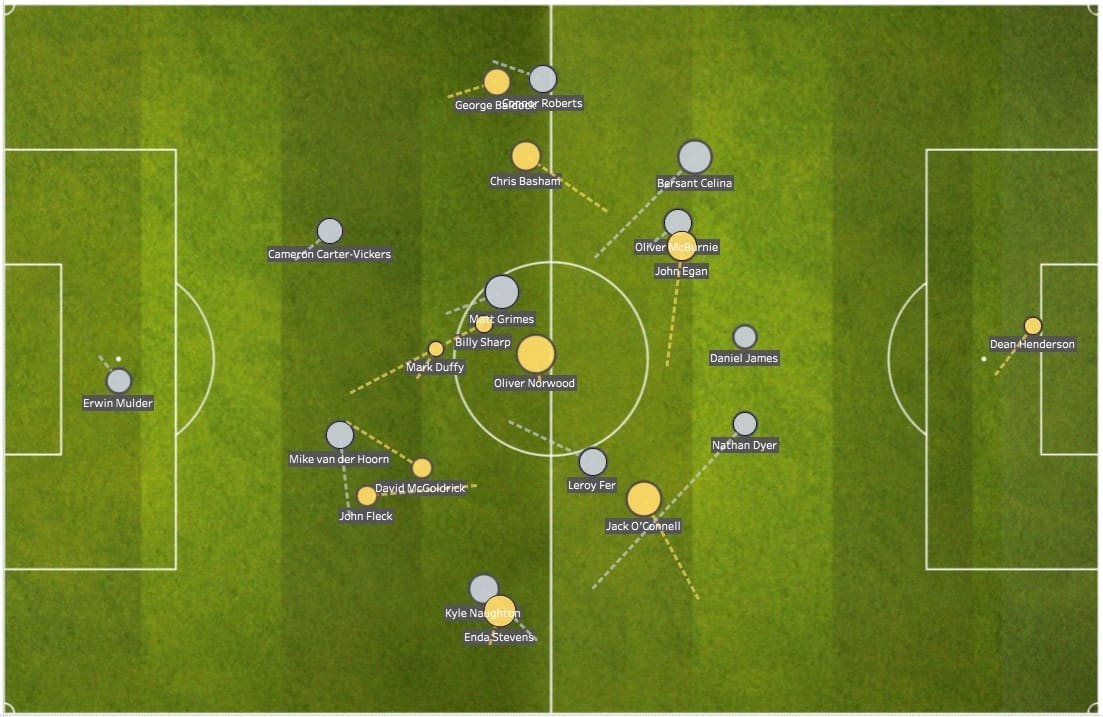
Thought to be another wise tactical call from Graham Potter, Dan James’ arrival at the start of the second half was actually the result of a calf injury to Wayne Routledge. Would he have still made the change, injury or not? Who knows. Either way, James made an impact moments after coming on.
Swansea City simply had to find a way to pin Sheffield United back and make them think twice about committing their centre-backs forward. Either that, or punish them for continuing to do so. The touches map below shows Dan James’ touches during the second half. You can see how he was able to push Sheffield United back into their own half, operating right across that band just inside the final third.
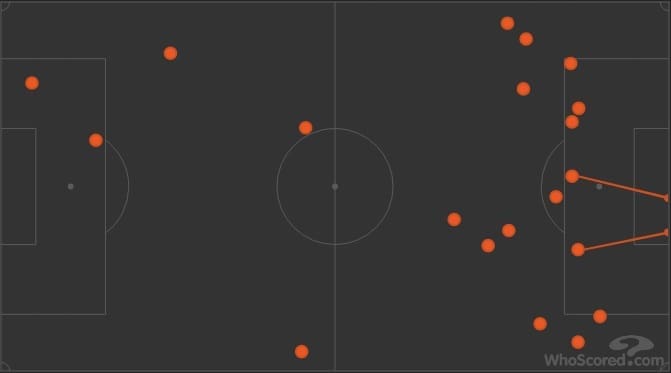
As the touch map above shows, James operated across the pitch in high areas, making excellent attacking runs into wide areas as well as through the middle. This helped to pin the opposition back, stretching them and opening up spaces in between the lines. For the first time in the match, Sheffield United had a serious threat to worry about.
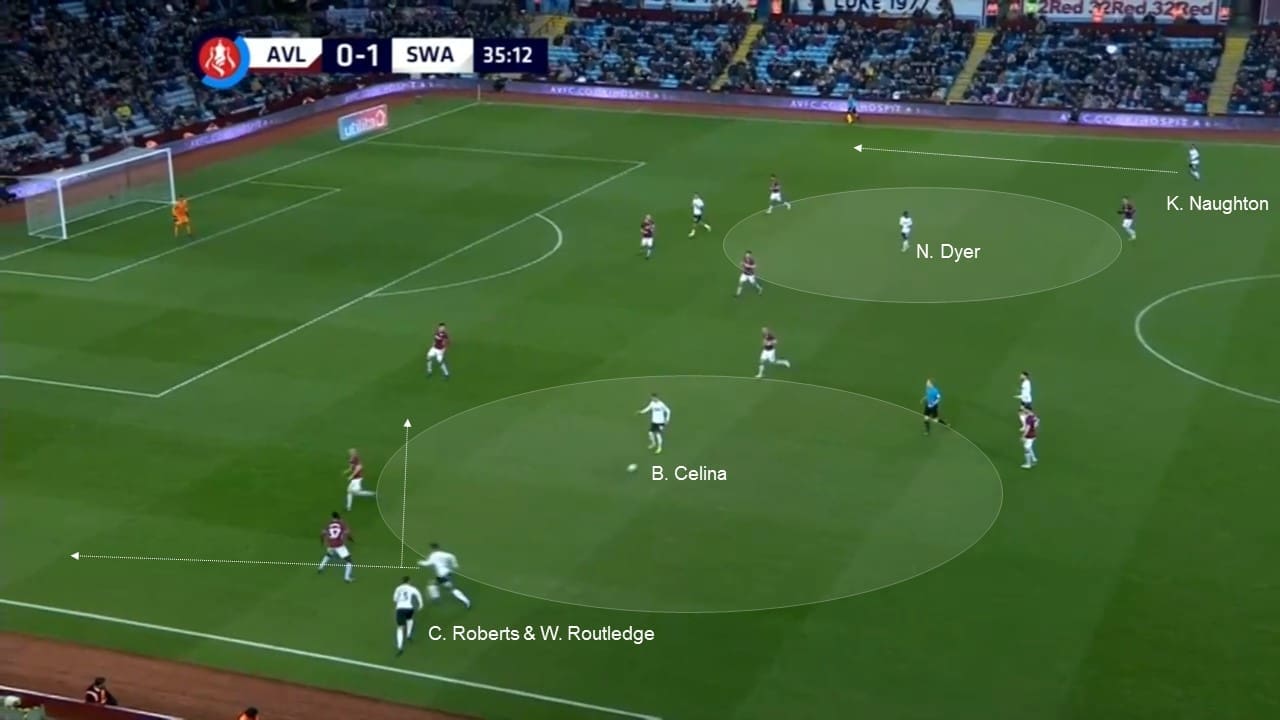
Despite that fact though, the Blades were still committed going forward. On a number of occasions they left space for Swansea City to counter-attack into.
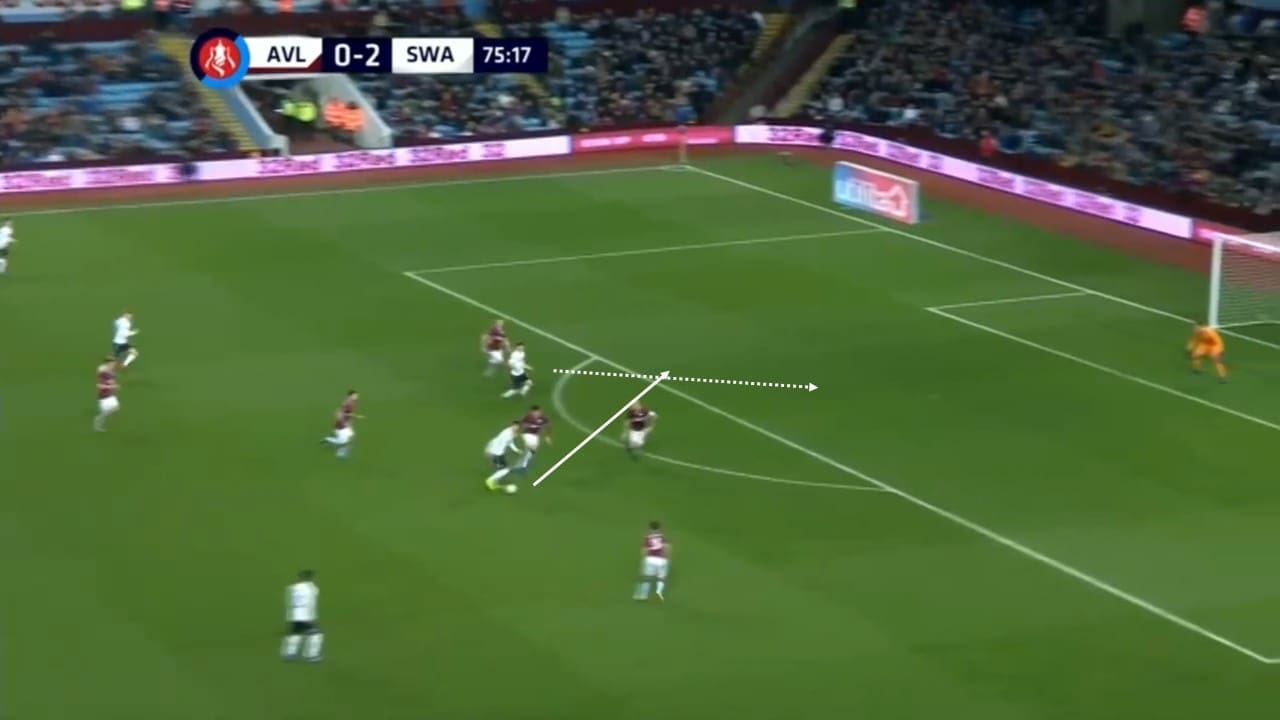
On one occasion, Bersant Celina showed his dribbling skills by making up 50 yards or more with an excellent solo run from deep to kick-start a counter-attack. Leroy Fer was another capable forward runner through the centre of the pitch.
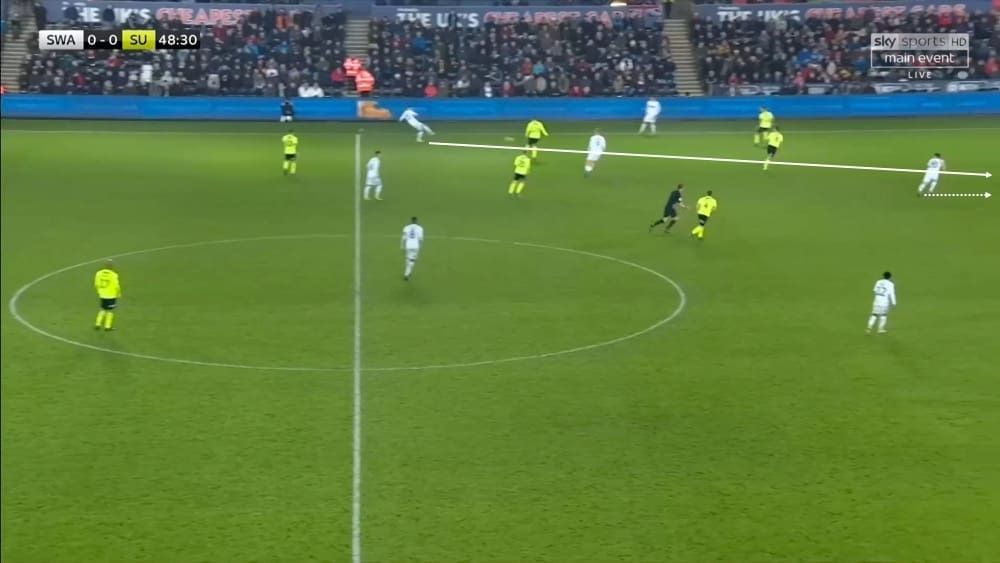
Spaces also opened up in the wider channels or the deep half-spaces. Swansea City were able to thread vertical passes that bypassed four or five players through Sheffield United’s lines.
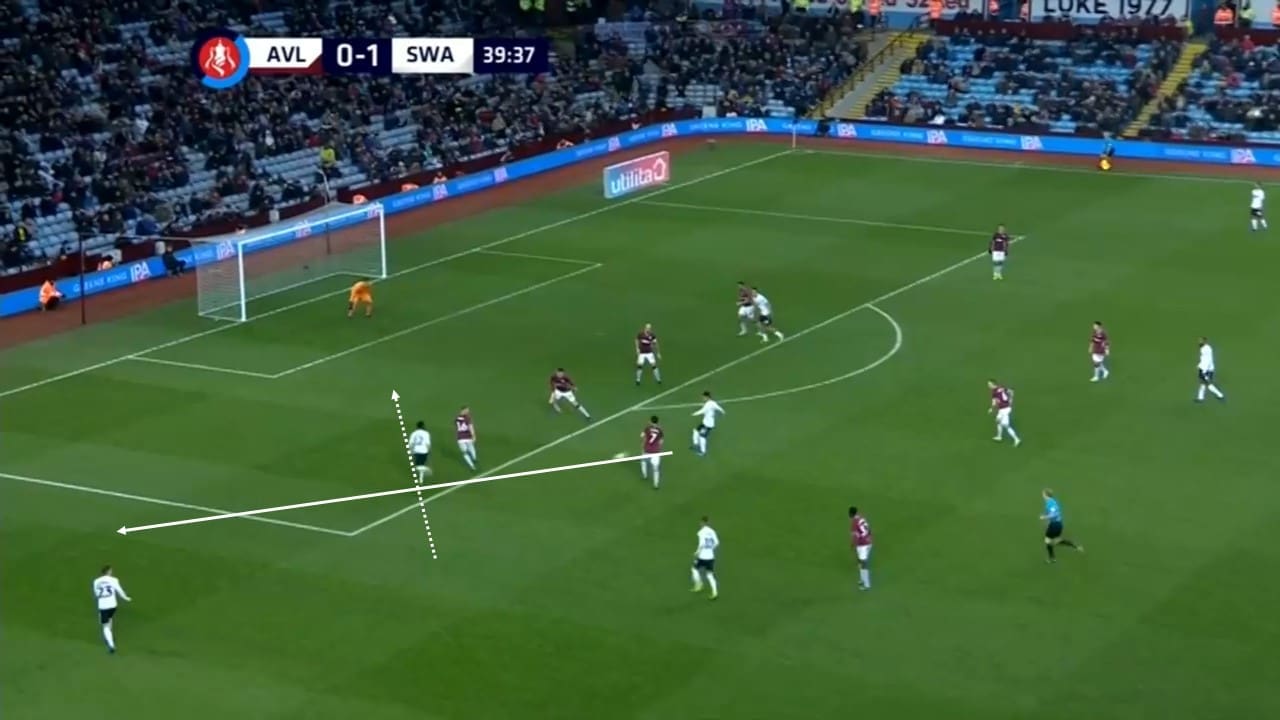
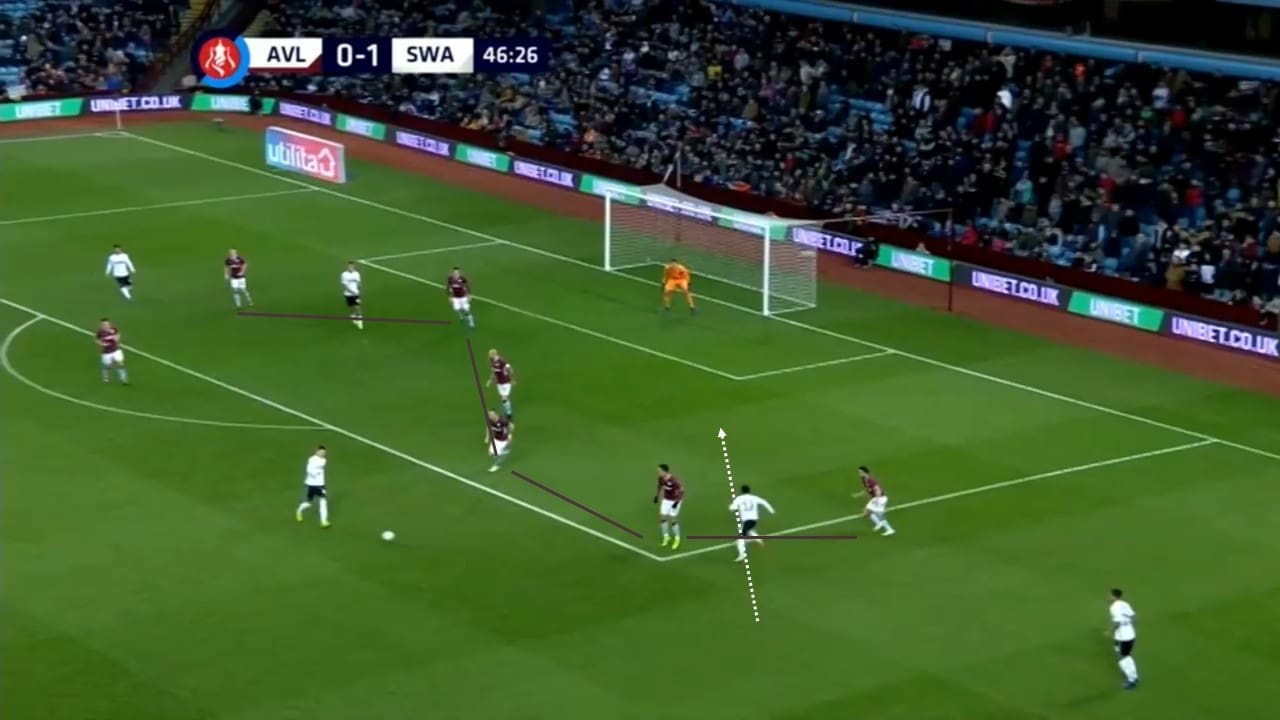
Swansea City get the winner
Swansea City’s winner came during their best spell of the game just before the midway point of the second half. After a corner is cleared, good work from Kyle Naughton keeps the ball alive as he stretches to help it on to Matt Grimes, who in turn lobs the ball over to the right for Nathan Dyer.
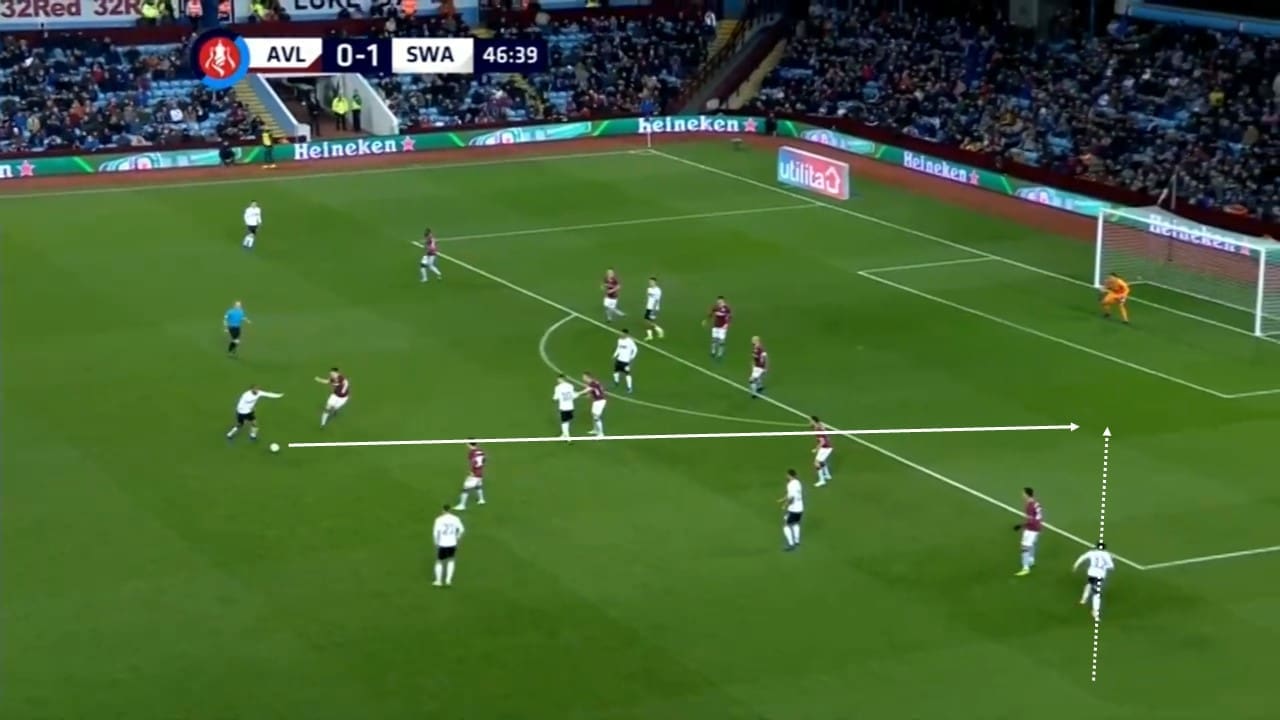
A neat one-two with Mike van der Hoorn gets Dyer in behind his marker before sending an inviting low ball across the six-yard area. Oli McBurnie shows excellent desire to get beyond Basham to poke the ball home from close range.
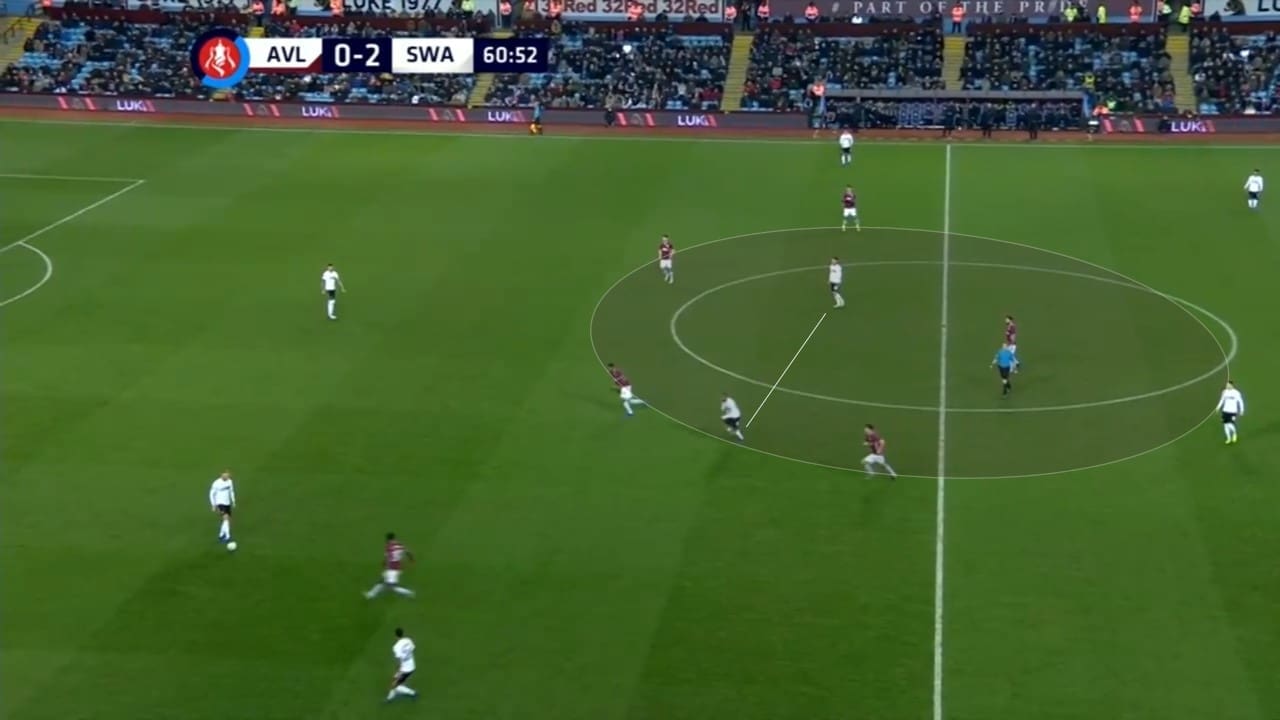
Sheffield United desperately needed to shake things up as Swansea were starting to find it far too easy to pick their passes and find team-mates forward in areas of space. Below shows Sheffield United’s narrow defensive shape and the ease with which the hosts can get the ball to either side. Right-back Kyle Naughton is in-field so Nathan Dyer moves out wide in an attempt to stretch the opposition.
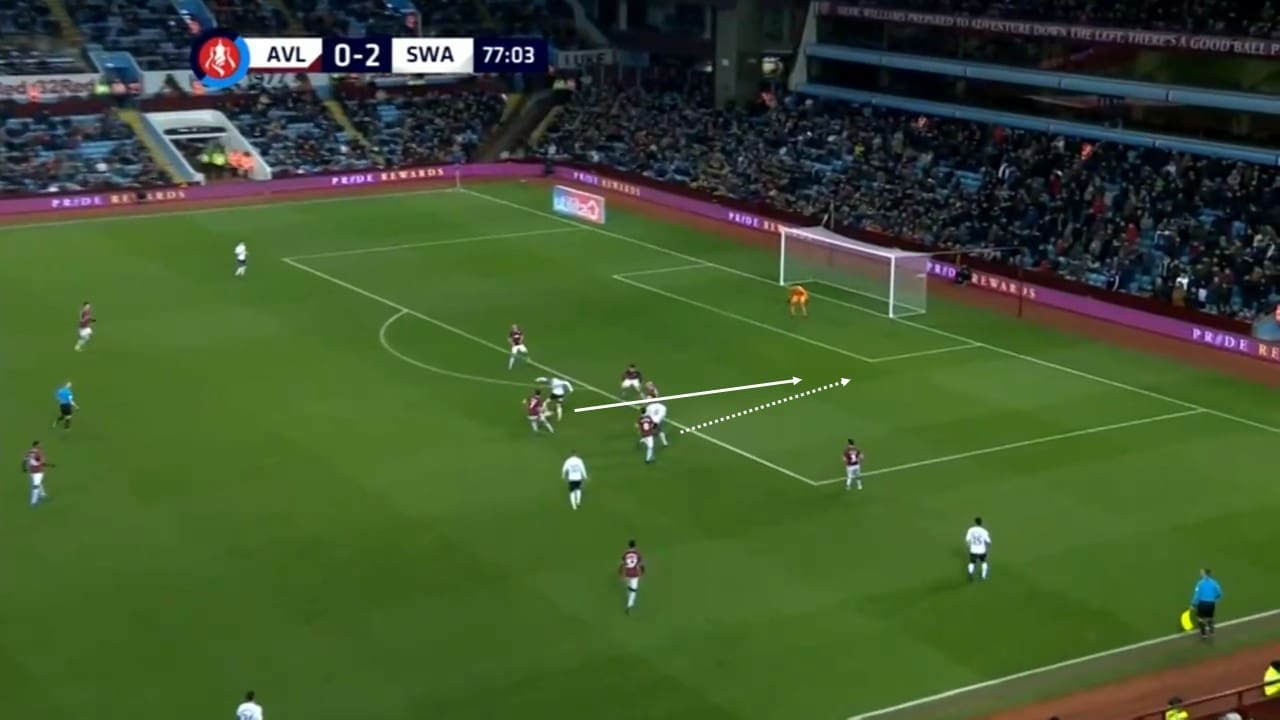
Sheffield United manager Chris Wilder changed his side’s shape in an effort to get back into the game, switching to a 4-3-3 formation to match Swansea’s as Chris Basham moved into midfield. Initially the Blades looked to work the ball into wide areas, but Swansea pretty much had this covered. They later opted to go long and direct, aiming long balls towards substitutes Clarke and new signing Madine.
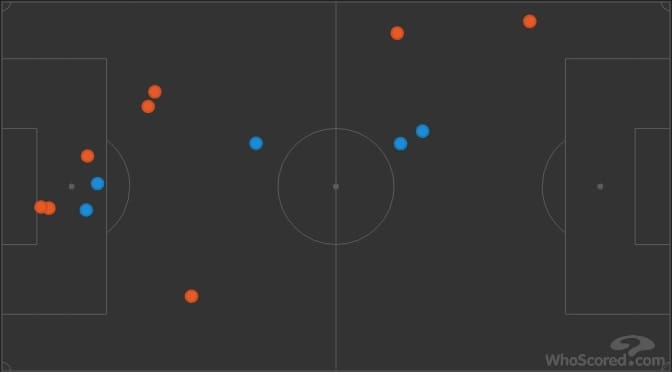
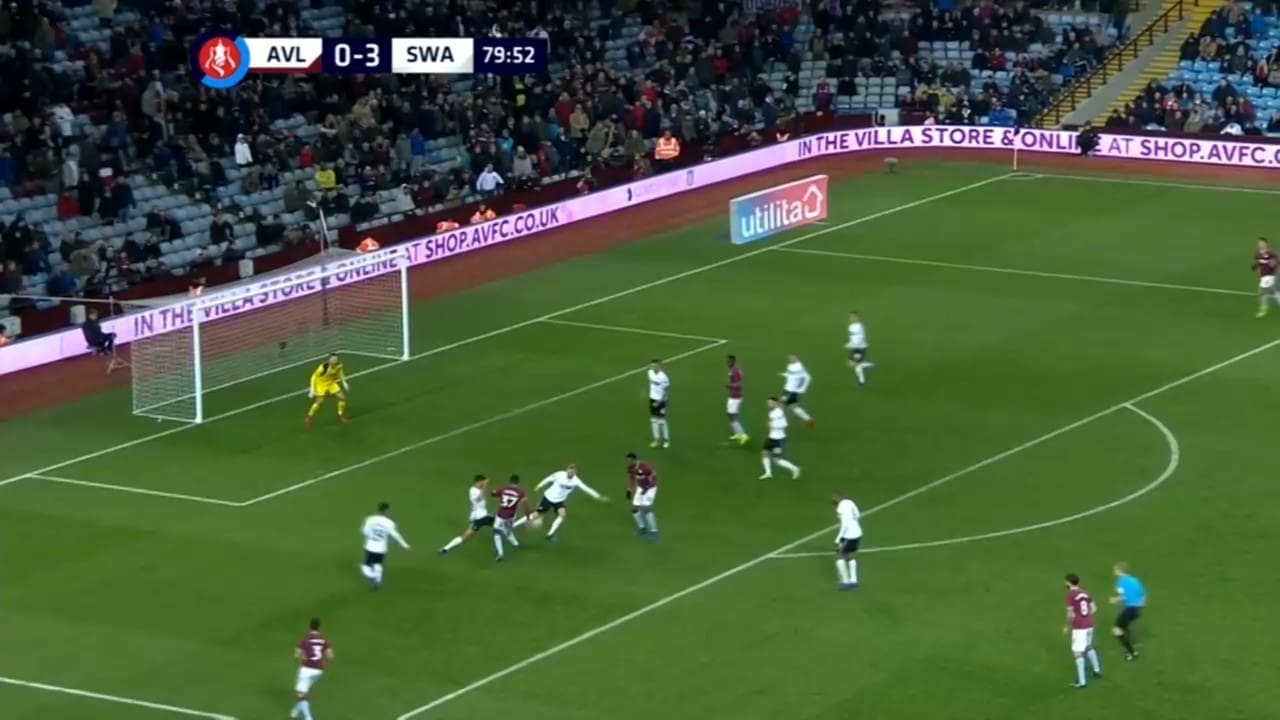

Summary
It was certainly a game of two halves. Swansea City made the most of their dominance following two surprising big missed chances in the first-half from Sheffield United’s Billy Sharp and David McGoldrick respectively.
Swansea City struggled in the first 20 minutes to cope with the Blades’ well-drilled and effective dynamic. They made life difficult for the hosts early on, but Graham Potter’s tactical switch helped contribute to their early second-half dominance, helped significantly by the superb Dan James.
A first clean sheet in the Championship since November will be very pleasing for Graham Potter, especially at home against a side who have been scoring for fun lately. United’s promotion hopes took a blow as they looked to close the gap on leaders Leeds, while Swansea may still hold on to some outside hope of reaching the playoffs.
If you love tactical analysis, then you’ll love the digital magazines from totalfootballanalysis.com – a guaranteed 100+ pages of pure tactical analysis covering topics from the Premier League, Serie A, La Liga, Bundesliga and many, many more. Buy your copy of the January issue for just ₤4.99 here, or even better sign up for a ₤50 annual membership (12 monthly issues plus the annual review) right here.






Comments